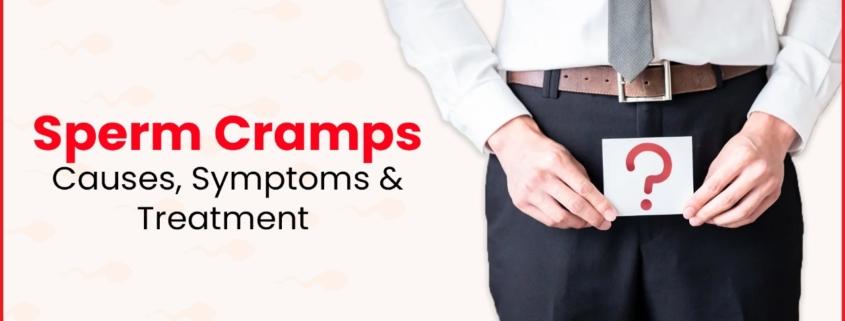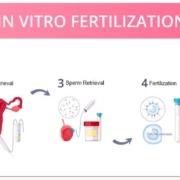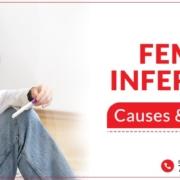Sperm Cramps – Causes, Symptoms, Diagnosis & Treatment
Introduction
In the realm of fertility, understanding the nuances of male reproductive health is crucial. One commonly overlooked aspect is the occurrence of sperm cramps. Despite being less discussed, sperm cramps can have significant implications for male fertility. In this blog, we will get into the causes, symptoms, diagnosis, and treatment of sperm cramps, shedding light on a topic that deserves more attention.
What Are Sperm Cramps?
Before we get into the details, let’s understand what sperm cramps mean. Sperm cramps, also known as testicular pain, are when you feel discomfort or pain in your testicles or scrotum. This could be a sign of problems with your male reproductive health.
Causes of Sperm Cramps
Understanding the root causes of sperm cramps is essential for effective management. Drawing insights from leading fertility experts and research, here are some common causes to be aware of:
Varicocele – Swollen Veins Impacting Sperm Flow:
- Varicocele specifically involves the enlargement of veins in the scrotum, creating a network of swollen blood vessels.
- This vascular anomaly can impede normal blood flow, causing discomfort and cramping in the affected area.
- Over time, compromised blood circulation may negatively impact sperm quality and fertility potential.
Infections – STIs and Reproductive System Infections:
- Sexually transmitted infections (STIs) chlamydia or gonorrhea can infiltrate the reproductive system, leading to localized infections.
- Infections in the reproductive organs can trigger inflammation and pain, influencing the overall health of sperm.
- Timely detection and treatment of these infections are crucial for preventing long-term complications and addressing sperm cramps.
Testicular Torsion – Urgent Twisting of the Testicle:
- Testicular torsion is a critical condition involving the sudden twisting of the testicle, compromising blood flow.
- This emergency is marked by a sudden and intense onset of pain, requiring immediate medical attention to prevent harm to the tissues.
- Testicular torsion is a time-sensitive issue, and swift intervention is vital for preserving both fertility and overall reproductive health.
Epididymitis – Inflammation of the Sperm Transport Tube:
- Epididymitis specifically refers to the inflammation of the epididymis, a coiled tube responsible for storing and transporting sperm.
- Inflammation in this crucial reproductive structure can lead to persistent pain and discomfort in the scrotum.
- Addressing the underlying cause of epididymitis is essential for alleviating symptoms and preserving sperm health.
Hernia – Impact on Reproductive Organ Function:
- A hernia, though primarily associated with the protrusion of abdominal contents, can contribute to testicular pain.
- In cases where a hernia affects the inguinal region, it may exert pressure on the surrounding structures, including the reproductive organs.
- Understanding and addressing the impact of a hernia on the normal functioning of the reproductive system is key to managing associated discomfort.
Symptoms of Sperm Cramps
Recognizing the symptoms associated with sperm cramps is vital for early intervention. Here’s a breakdown of common indicators:
Pain or Discomfort – Location and Intensity:
- The pain associated with sperm cramps is often localized to the testicles or scrotum.
- It may manifest as a dull ache, throbbing sensation, or intermittent sharp pain.
- The intensity of the discomfort can vary, ranging from mild irritation to more severe, persistent pain.
Swelling or Tenderness – Observable Changes:
- Swelling in the scrotal area may result from the underlying causes of sperm cramps, such as varicocele or infections.
- Tenderness can be assessed by touch, and individuals may notice increased sensitivity or discomfort when the affected area is palpated.
- Observing any noticeable changes in the size or texture of the scrotum is crucial for identifying potential issues related to sperm cramps.
Changes in Sperm Quality – Impact on Fertility:
- Sperm cramps can influence the quality of sperm, potentially affecting fertility.
- Changes in sperm quality may include alterations in sperm motility, sperm morphology, or concentration.
- Monitoring fertility indicators, such as changes in ejaculate consistency or colour, can provide insights into potential disruptions in sperm quality associated with sperm cramps.
Diagnosis of Sperm Cramps
Proper diagnosis is crucial for effective treatment. Fertility specialists employ various diagnostic measures, including:
Physical Examination – Targeted Assessment of Reproductive Structures:
- A comprehensive physical examination focuses on the scrotum and surrounding areas, aiming to identify specific abnormalities related to sperm cramps.
- Fertility specialists will assess for the presence of swelling, tenderness, or irregularities in the testicles, scrotum, and epididymis.
- Special attention may be given to palpation techniques to gauge the severity and location of pain, aiding in the identification of potential causes.
Ultrasound Imaging – Precision in Reproductive Organ Assessment:
- Ultrasound imaging is a non-invasive technique used to visualize the internal structures of the scrotum and reproductive organs.
- High-frequency sound waves provide detailed images, allowing specialists to assess the size, shape, and blood flow in the testicles.
- Specific ultrasound protocols may be employed to target areas affected by conditions like varicocele or testicular torsion, aiding in accurate diagnosis.
Blood Tests – Hormonal and Infectious Markers:
- Blood tests are crucial for evaluating hormonal imbalances that may contribute to sperm cramps.
- We check hormone levels like testosterone, luteinizing hormone (LH), and follicle-stimulating hormone (FSH) to find any irregularities that might affect reproductive function.
- Additionally, blood tests can detect markers of infection, helping to diagnose and treat any underlying infections contributing to sperm cramps.
By enhancing the specificity of each diagnostic measure, individuals can better understand the purpose and significance of these assessments in the context of sperm cramps. This clarity is essential for fostering informed discussions with healthcare providers and ensuring a thorough and accurate diagnosis.
Treatment Options for Sperm Cramps
Addressing sperm cramps often involves a tailored approach based on the underlying cause. Referencing insights from leading fertility treatment centres, here are some common treatment options:
Varicocele Repair – Precision in Vein Correction:
- Varicocele repair involves a surgical procedure to precisely address the enlargement of veins within the scrotum.
- Microsurgical techniques may be employed to ligate or redirect the affected veins, restoring normal blood flow to the testicles.
- This targeted intervention aims not only to alleviate sperm cramps but also to enhance sperm quality by improving the overall reproductive environment.
Antibiotic Therapy – Targeted Eradication of Infections:
- Antibiotic therapy is prescribed when infections are identified as the cause of sperm cramps.
- The choice of antibiotics is specific to the type of infection diagnosed through laboratory tests.
- It’s important to finish the entire antibiotic treatment to make sure the infection is eliminated. This helps address the root cause of discomfort and supports optimal reproductive health.
Pain Management – Customized Relief Strategies:
- Pain management for sperm cramps may involve over-the-counter medications such as non-steroidal anti-inflammatory drugs (NSAIDs).
- Specific pain relief measures are tailored to the individual’s needs, taking into account factors such as the severity of pain and any underlying conditions.
- Non-pharmacological approaches, such as applying cold or warm compresses, may also be recommended for targeted relief.
Surgical Intervention – Timely Addressing of Critical Conditions:
- Surgical intervention becomes necessary in severe cases, such as testicular torsion or hernias.
- Timely surgical procedures are essential for preventing irreversible damage and preserving fertility.
- Surgical techniques may vary based on the specific condition, ranging from detorsion in testicular torsion cases to hernia repair to alleviate pressure on reproductive structures.
Offering detailed information on each treatment option empowers individuals to grasp a deeper understanding of the available interventions for addressing sperm cramps tailored to their unique circumstances. This knowledge is essential for making well-informed decisions through discussions with healthcare professionals.
Conclusion:
In conclusion, the journey through the intricacies of sperm cramps and male infertility reveals the nuanced nature of reproductive health. Key takeaways underscore the importance of understanding sperm cramps, acknowledging the significance of male fertility, and recognizing the role it plays in the broader context of family-building.
Sperm cramps are not just challenges; they are opportunities for informed decision-making. Understanding the intricacies of male fertility empowers individuals to navigate this journey with clarity and purpose. At Imprimis IVF, we stand as partners in your pursuit of parenthood.
Schedule a Consultation at Imprimis IVF
As you embark on your fertility journey, Imprimis IVF extends an invitation to schedule a consultation for personalized fertility assessments. This call to action is an opportunity to take the next step toward understanding and addressing your unique fertility landscape.
Your journey to parenthood begins with a conversation. Schedule a consultation at Imprimis IVF, where our dedicated team is ready to provide personalized fertility assessments, answer your questions, and guide you toward the most effective and individualized fertility plan.










